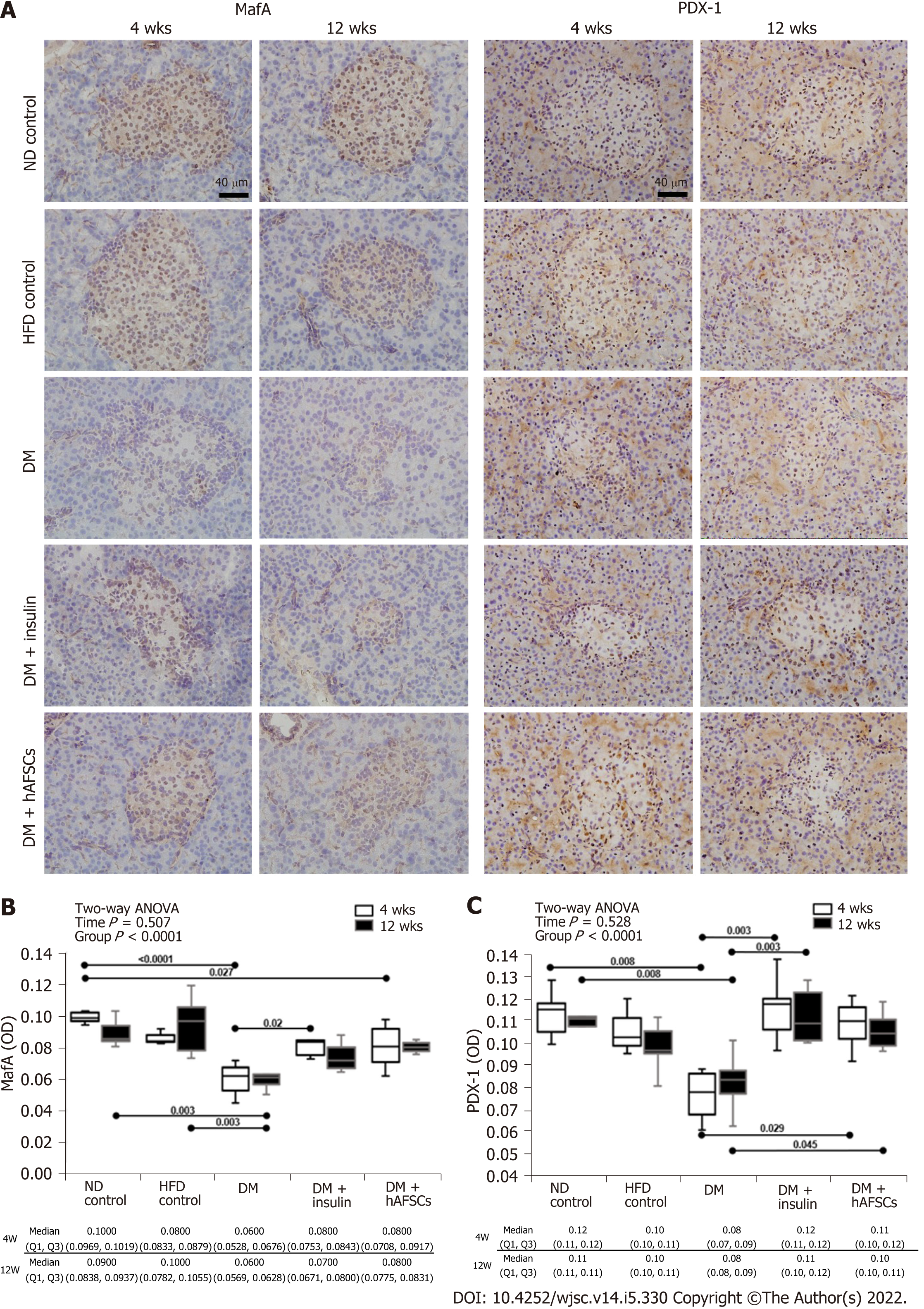Copyright
©The Author(s) 2022.
World J Stem Cells. May 26, 2022; 14(5): 330-346
Published online May 26, 2022. doi: 10.4252/wjsc.v14.i5.330
Published online May 26, 2022. doi: 10.4252/wjsc.v14.i5.330
Figure 6 Immunoreactivity to Maf family of transcription factors and pancreatic transcription factor in the bladder of rats of different groups.
The immunoreactivity to MafA and pancreatic transcription factor (PDX-1) in the pancreatic islets was decreased at 4 and/or 12 wk after DM induction. Insulin treatment can recover MafA immunoreactivity at 4 wk and PDX-1 immunoreactivity at 4 and 12 wk. However, human amniotic fluid stem cells treatment can only recover PDX-1 immunoreactivity at 4 and 12 wk after diabetes induction. n = 6. Statistics: Median with first and third quartile (Q1, Q3) for continuous variables. Two-way analysis of variance was used for initial analysis. Kruskal-Wallis test with post hoc Bonferroni test for intergroup analysis. Mann-Whitney U test for the comparison between 4 wk and 12 wk. P values are shown in each comparison. A: Maf and pancreatic transcription factor (PDX-1) immunoreactivity in the pancreas; B: Immunoreactivity ratio of Maf using optical density; C: Immunoreactivity ratio of PDX-1 using optical density. ND: Normal diet; DM: Diabetes mellitus; hAFSCs: Human amniotic fluid stem cells; HFD: High-fat diet; PDX-1: Pancreatic transcription factor 1.
- Citation: Liang CC, Shaw SW, Huang YH, Lee TH. Human amniotic fluid stem cell therapy can help regain bladder function in type 2 diabetic rats. World J Stem Cells 2022; 14(5): 330-346
- URL: https://www.wjgnet.com/1948-0210/full/v14/i5/330.htm
- DOI: https://dx.doi.org/10.4252/wjsc.v14.i5.330









